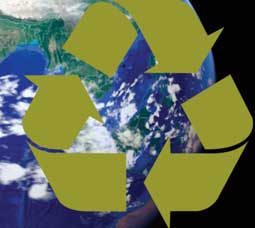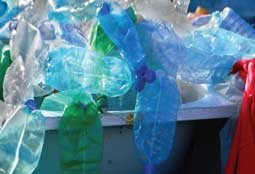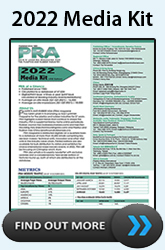Country Focus: Southeast Asia rises to the circular economy challenge
Low recycling rates and recoverability of high-value resources from plastic wastes are major roadblocks for circular agendas of countries in the Southeast Asian region. One country that is taking the leap is Malaysia, says Angelica Buan in this article.
ASEAN pushed to recycling goals
Southeast Asia, or the ASEAN, is not an outlier in the global circular economy movement. Indeed, the circular economy, along with security and trade cooperation, is usually at the forefront of issues at regional meetings. But making the circular economy agenda successful is a different story.
The region, which is a large consumer and producer of petroleum-based plastics, has to meet its recycling goals, simply because the growing volume of municipal solid waste (MSW), primarily from households, commercial and industrial sources, and other human activities, is becoming too much to handle.

Of the ten countries in the ASEAN bloc, Indonesia is estimated to generate the highest quantity of MSW with 64 million tonnes/year, followed by Thailand at 26 million tonnes and Vietnam at 22 million tonnes. The Philippines, Malaysia, Myanmar and Laos generated between nearly 8-15 million tonnes/year, according to data published in the Waste Management in ASEAN countries report by the United Nations Environment Programme (UNEP) in 2017.
As it stands, sanitary landfills and open dumps are the most common forms of waste management. Recycling rates in the region are falling short of targets, owing to inefficient disposal methods and the lack of recycling infrastructure and technologies. It’s not surprising that viable materials from recycled plastics aren't recovered.
An initiative, the ASEAN Regional Action Plan (RAP), launched in May this year as a response to mismanaged plastic wastes and marine debris, calls for more drastic measures to improve collection, reduce plastic inputs into the system, prevent leakage of plastic scraps into the environment, and create value for waste reuse.
The action plan proposes for guidelines to phase out single-use plastics (SUPs), harmonise regional policies on recycling and plastics packaging standards, and improve regional marine debris monitoring.
Billions of missed opportunities from waste
A recent dismal finding is that only roughly 25% of plastics available for recycling in Malaysia, the Philippines, and Thailand are recycled into valuable materials, including SUPs that are discarded rather than recycled, according to a World Bank report. As a result, more than 75% of the material value of plastics has been lost, amounting to US$6 billion per year in the three countries.
The recent World Bank report, on the situation of marine debris in Thailand, Malaysia, and the Philippines, is framed in the context of the economic opportunities in plastic circularity.

The report states that this is not only a waste of natural resources and a missed opportunity for local industries, but it's also a significant missed opportunity for these countries to improve their trade balance by creating jobs and earning foreign exchange through the export of recycled plastics and other materials.
The recommendations in the report involve ramping up the sorting efficiency of post-consumer plastics collection, setting recycled content targets across all major end-use applications, implementing "design for recycling" standards for plastics, especially for packaging, and encouraging higher recycling capacities.
Going the full circle with PET bottle recycling
PET plastic is a common packaging material for essential consumer products such as food and beverage, personal and household care, and others that are commonly purchased by households in Southeast Asia because it is convenient and lightweight.
In 2020, about 2.12 million tonnes of PET bottles were consumed by five countries in Southeast Asia, including Malaysia, the Philippines, Indonesia, Thailand and Vietnam, according to the World Wide Fund (WFF)’s Plastic Packaging in Southeast Asia and China report.
The bad news is that when these PET bottles reach the end of their useful lives, they will be discarded.
On the other hand, beverage giant Coca-Cola says recycling PET bottles can greatly benefit the environment and economies, in its report titled Full Circle: Accelerating the Circular Economy for Post- Consumer PET bottles in Southeast Asia.

Prepared by Singapore-based research firm GA Circular, the Coke report articulates on how plastic recycling reduces the need for new plastics, shrinks landfill use and incineration, encourages the development of innovative plastic-derived products, and curbs pollution. The resins or pellets made from recycled post- consumer PET bottles can be used to make new bottles and containers, as well as packaging and fibres.
Six countries: Malaysia, the Philippines, Indonesia, Thailand, Vietnam, and Myanmar, accounted for 3.8% or 880,000 tonnes of global PET bottle consumption, and contributed about 29% of total plastic leakage into the oceans, the report said.
By the year 2030, PET bottle consumption in these countries could reach 1.52 million tonnes. Yearly, an estimated 660,000 tonnes of PET bottles are dumped in landfills or leak into the environment, resulting in a loss of US$199 million. According to the report, PET bottle collection rates for recycling are on average 54% at the city level (based on nine representative cities) and 26% at the national level in the six countries.
As a result, the report emphasises the importance of focusing on systemic solutions to drive circularity, recommending the implementation of an industry-led PRO (Packaging Recovery Organisation). The latter is focused on boosting the value chain by implementing a price incentive that also benefits the informal sector, which is the backbone of PET bottle collection in these countries.
Other solutions focus on material end markets; improving packaging design to optimise the economics of recyclability; and for governments to create circular economy policies and standards, such as food-grade recycled content guidelines, recycled content targets, and source separation and separate collection.
(PRA)
Subscribe to Get the Latest Updates from PRA Please click here
©2021 Plastics and Rubber Asia. All rights reserved.

©2020 Plastics and Rubber Asia. All rights reserved.
Home Terms & Conditions Privacy Policy Webmail Site Map About Us


















